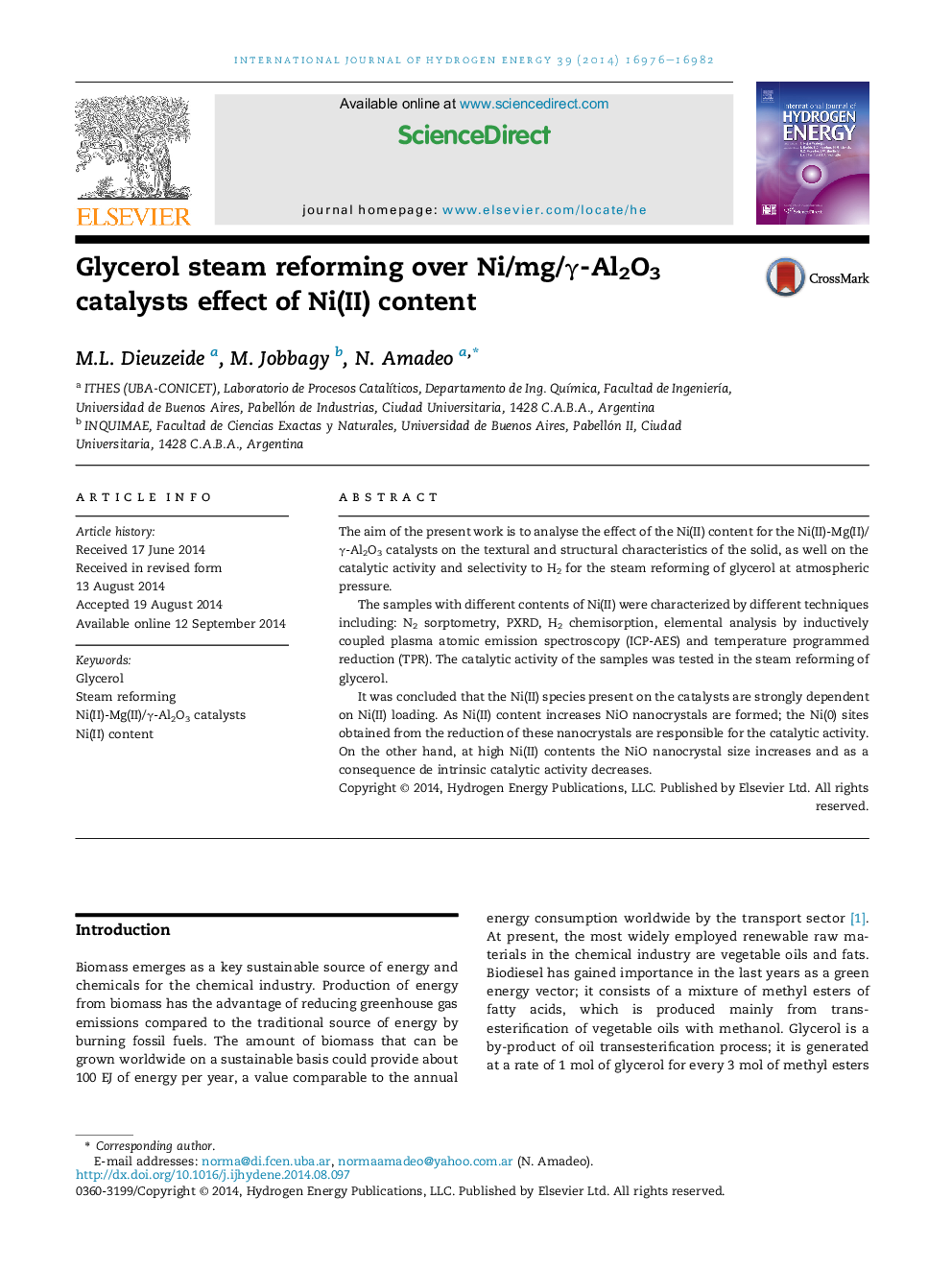| Article ID | Journal | Published Year | Pages | File Type |
|---|---|---|---|---|
| 1272154 | International Journal of Hydrogen Energy | 2014 | 7 Pages |
•Highest activity for glycerol steam reforming was achieved with 10 wt.% Ni(II).•The Ni(II) species present on the catalysts are strongly dependent on Ni(II) loading.•Linear decreasing relation is verified between intrinsic activity and Ni(II)/Al(III).•NiO nanocrystals are formed at Ni(II) contents higher than 5 wt.%.•NiO nanocrystals are responsible for glycerol conversion to gaseous products.
The aim of the present work is to analyse the effect of the Ni(II) content for the Ni(II)-Mg(II)/γ-Al2O3 catalysts on the textural and structural characteristics of the solid, as well on the catalytic activity and selectivity to H2 for the steam reforming of glycerol at atmospheric pressure.The samples with different contents of Ni(II) were characterized by different techniques including: N2 sorptometry, PXRD, H2 chemisorption, elemental analysis by inductively coupled plasma atomic emission spectroscopy (ICP-AES) and temperature programmed reduction (TPR). The catalytic activity of the samples was tested in the steam reforming of glycerol.It was concluded that the Ni(II) species present on the catalysts are strongly dependent on Ni(II) loading. As Ni(II) content increases NiO nanocrystals are formed; the Ni(0) sites obtained from the reduction of these nanocrystals are responsible for the catalytic activity. On the other hand, at high Ni(II) contents the NiO nanocrystal size increases and as a consequence de intrinsic catalytic activity decreases.
